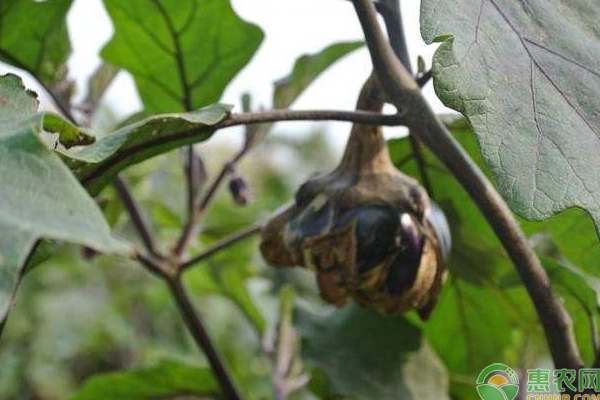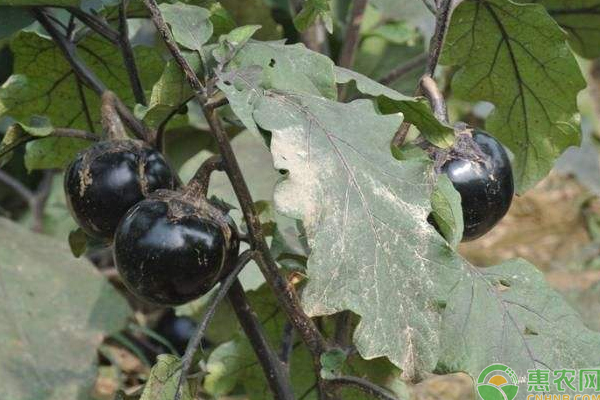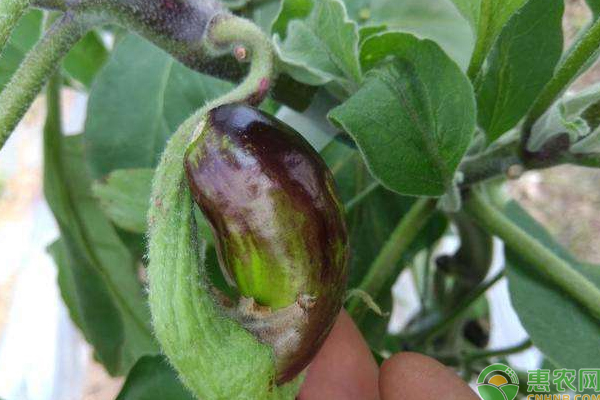Eggplant is a common type of vegetable growers. Do you have any fruit growers in the planting process? How did you prevent it? The following small series will give you an analysis of the causes and prevention measures of the eggplant cracking. Recently, Xiaobian received a lot of vegetable farmers' messages and asked about the symptoms of eggplant cracking. The following small series will tell you in detail. In fact, the main reason for eggplant cracking is because of uneven watering and calcium deficiency. When the eggplant grows up, it will cause most of the eggplant to crack. Measures to prevent cracking of the top of eggplant: 1. Increase the application of calcium fertilizer: Calcium fertilizer with higher calcium content such as ammonium calcium and magnesium is applied to the soil; 2. Proper watering: Drought watering in time, but not too much, and spraying a new high-fat film 600 times to reduce moisture evaporation. In the rainy days, it is necessary to prevent flooding and timely drainage. 3. Strengthen management: Strengthen the prevention and control of pests and diseases, and use roots and roots to cooperate with micro-fertilizer to root, promote root growth and development, and improve absorption capacity; 4. External fertilization: When the air humidity in the rainy season is large, it is necessary to pay attention to the fertilization time. Generally, the calcium-containing foliar fertilizer is sprayed once a week. Eggplant cracking fruit is a common disease in eggplant production, but if it is not timely prevented, it will cause serious damage. The severe eggplant can be cracked in various parts, the size of the crack is different, and the fruit is easily broken after cracking, which seriously affects the quality of eggplant. And economic benefits. First, the causes and symptoms of cracked fruit 1. The sassafras causes damage to the fruit. After the sassafras is damaged by the eggplant, the skin is rough, which causes the fruit to crack and damage the quality of the eggplant. 2. Uneven water supply can also cause cracking. The main cracking fruit is mainly characterized by a top longitudinal crack that reveals the seed. When the water supply of eggplant is uneven, it is caused by the large water, which will cause the fruit to grow rapidly. At this time, the peel is broken and the fruit is cracked. The plants performed normally. 3. When the flower buds differentiate, the temperature is low, causing cracking. Eggplant flower buds have certain requirements on temperature, and the temperature in the differentiation stage is low. It is easy to differentiate into multi-ventricular malformed flowers. The fruits developed by this flower often show top cracking. Under normal circumstances, the plants behave normally. 4. Improper hormone treatment causes cracking. When the hormone is used for flowering or smearing, excessive concentration can also cause cracking of the top of the fruit. Second, preventive measures 1. Prevent and control tea jaundice in time. In the middle and late growth period of eggplant, the peak period of sassafras is occurring, and it should be prevented as soon as possible. Otherwise it will cause serious consequences. 2. The water supply should be balanced. During the growth process of eggplant, the water supply is suitable. The water supply should be balanced during the flowering period, otherwise it will affect the later growth. The eggplant cultivated in the open field must be drained in time if there is heavy rain after the drought in the early stage of fruit enlargement. 3. Strengthen temperature management during flower bud differentiation. In the flower bud differentiation period of eggplant, temperature management should not only consider the vegetative growth of seedlings, but also the temperature requirements of flower bud differentiation and development. If the temperature is too high, the seedlings will be long, and the temperature will be too low, which will affect the flower bud differentiation. For this reason, the temperature should be controlled at 27 °C - 30 °C during the day and 18 °C to 20 °C during the night, so as to promote the normal differentiation and development of flower buds. 4. Proper use of hormone treatment. When using hormonal flowers or sprays, be sure to follow the instructions for the drug. Avoid using hormone treatment at high temperatures at noon, and do not repeat silk or flower spray. When scenting or spraying, in the appropriate concentration range, the concentration may be lower when the temperature is high, and may be higher when the temperature is low, and the concentration should not be too high. High-yield technical points of eggplant 1. Choose excellent varieties: The fruit should be selected to be dense and of good quality, the plant shape is neat and compact, the leaves are dark green, and the fruit is purple and bright. 2. Cultivate strong seedlings: Eggplant seedlings are in the low temperature season. It is generally required to plant seedlings in the warming greenhouse or solar greenhouse. When the two true leaves are grown, the seedlings are planted in the solar greenhouse. 1 Preparation of nutrient soil: Due to the high seeding density, the sowing bed absorbs water and minerals from the bed soil in a large area per unit area. In addition, the root system is dense, and its respiratory action requires strict oxygen, so the nutrient soil of the seed bed must be well ventilated. Contains all the nutrients needed for seedling growth. 2 bed making: The planting bed area is 1.5?O per mu. The method of laying the bed is to first lay a layer of sticky soil, smash the concrete, spread the soil with 3~5cm above, and then pour the water, spread the seeds of the buds evenly on the bed, and cover the 1cm thick nutrient soil. . Moreover, it is necessary to maintain moisture and increase the temperature to promote emergence. 3. Seed treatment: Eggplant seeds can be soaked in warm soup or treated with chemicals to achieve the purpose of disinfection. The method is to place the seed in water at 55 ° C, stir constantly until it is lowered to room temperature, or treat with potassium permanganate 1000 times for 15 to 20 minutes. Eggplant soaking time is 10 to 12 hours. It is required to continuously wash the seeds and remove the mucus to accelerate water absorption and breathing and promote germination. After soaking, rinse with water, drain, and germination. 1 germination. The seeds are wrapped in a clean damp cloth and placed in a place of 28 to 30 ° C to germination. 2 seedling management. Closed insulation after sowing, try to increase the temperature of the seedbed and promote emergence. After emergence, the mulch should be opened to prevent the occurrence of collapse. The eggplant is prone to hatching. The sprayer can be used to spray the shell in the evening, so that the seedlings can be uncapped at night. It is also possible to evenly spread a layer of fine soil when the seed is arched, not only to prevent the cap from being unearthed, but also to prevent the air leakage caused by the emergence of the arched soil. At the seedling stage, attention should be paid to the growth temperature. When two true leaves are grown, the seedlings can be divided. One day before seeding, the seedling bed was poured once and permeable. 3 points of seedbed preparation and seedlings. The preparation of the seedling soil is the same as the preparation method of the nutrient soil of the seed bed. Pay attention to the thickness of the seedbed soil to ensure the nutrient and air needs of the roots throughout the seedling period. The seedling density is 8 to 10 cm square. In recent years, nutrient mash has been widely applied to the solanaceous seedlings, which can effectively protect the root system and facilitate operation, management and transportation. It is more suitable to use eggplant seedlings with a diameter of 10 cm. 4, colonization: Need to be done on a sunny day. Planted at a density of 30 cm from the plant. The roots should not be too deep, so it is appropriate to be flush with the nursery, and watered with the ditch after planting. The amount of water should not be too large, so as to avoid the drop in ground temperature and affect the slow seedlings. 5. Harvesting: The vine is easy to fall, so it should be harvested early to promote plant growth. 6. Pest control: The most serious disease of eggplant is verticillium. Rotation should be carried out. The diseased land can be grafted with eggplant, and the common rootstock is red cigar. The main insect pests of eggplant are red spider, sassafras and aphids. It is necessary to strengthen the inspection of the insects, and to carry out chemical control in the early stage of the occurrence of the sassafras. It can be controlled by the emulsifiable emulsifiable concentrate or the dicofol emulsifiable concentrate. For the damage of mites and red spiders, spray with 40% dimethoate 800 times solution. Eggplant is high in nutrients and delicious. It is a dish that many people like to eat. At present, the market demand is large and it is worth planting. The above is a detailed high-yield planting technique for eggplant. You can check it out. Insulin Syringes Needle,Disable Syringe,Monoject Syringe,10 Ml Syringe FOSHAN PHARMA CO., LTD. , https://www.fspharmaapi.com

